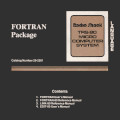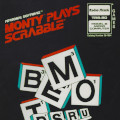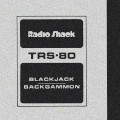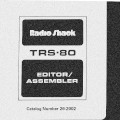TRS-80 Mailgram
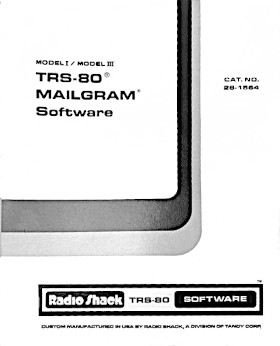
Title page of the TRS-80 Mailgram manual
The Mailgram service was introduced by Western Union in 1970. Mailgram worked by transferring digital messages to a location closer to the recipient, printing them out, and then mailing them using the postal mail. The process was described this way in a Western Union advertisement from a 1972 Life magazine:
Just call a number shown below (toll-free from most phones). Western Union will transmit your message electronically to a post office near your addressee. And the next business day your Mailgram will be delivered by regular letter carrier.
The price of a Mailgram message depended on several factors, such as the number of recipients. (More recipients meant a lower price per message sent.) Both the 1972 Life advertisement and a 1977 New York Times article quoted a price of $1.60 for a 100 word message. Adjusted for inflation, that would range from seven to ten dollars in today’s money.
TRS-80 Mailgram provided a way for businesses to send Mailgrams using a TRS-80, rather than the Telex terminals normally used. It was described in the November 21, 1979 issue of InfoWorld:
Radio Shack has announced a Mailgram software package, which allows a properly equipped TRS-80 to access the Western Union Infomaster message switching computer. According to some estimates, there are now more than 150,000 TRS-80’s in use – that amounts to more than all the Telex and TWX terminals combined. To make use of the Western Union system, a user must buy the software package from Radio Shack and pay Western Union $50 for an account.
An article in the July 1980 issue of 80 Microcomputing described the advantages of Mailgrams as “their speed, compared to regular mail delivery, and their cost, compared to telegram rates.” They also said that Mailgrams sent using the TRS-80 software were charged at “lower rates than the general public.”
Reading the TRS-80 Mailgram manual shows that the package was targeted at businesses. (Not surprising, given the high mailing costs.) For example, here is the sample message used in the manual to demonstrate message sending:
THERE WILL BE A NATIONAL SALES MEETING IN THE CHICAGO OFFICE ON THURSDAY, APRIL 14. ALL SALES MANAGERS ARE EXPECTED TO ATTEND. THE MEETING WILL BEGIN PROMPTLY AT 8:00 AM.
One of the more interesting features of Mailgram involved address lists used for mailing to multiple recipients. Custom lists incurred additional costs for storage, which seem to have been 5 cents per address per month. But Mailgram also provided a number of common industry address lists. These included:
- Radio stations
- Television stations
- Daily newspapers
- Hospitals
- U.S. Senate
- U.S. House of Representatives
- U.S. congressional committees
- State legislatures
- Fortune 1000 companies and Non-Industrial 300
- Domestic travel agencies
This provided a straightforward, if rather expensive, way for businesses to send (for example) an announcement to every radio station or every daily newspaper in the United States. The manual stressed the high costs associated with this feature:
The following feature should not be tested. This feature will send thousands of Mailgram messages at one time. It should only be called when you actually want to use this feature.
The Mailgram software only appeared in the Radio Shack catalog until 1982.
